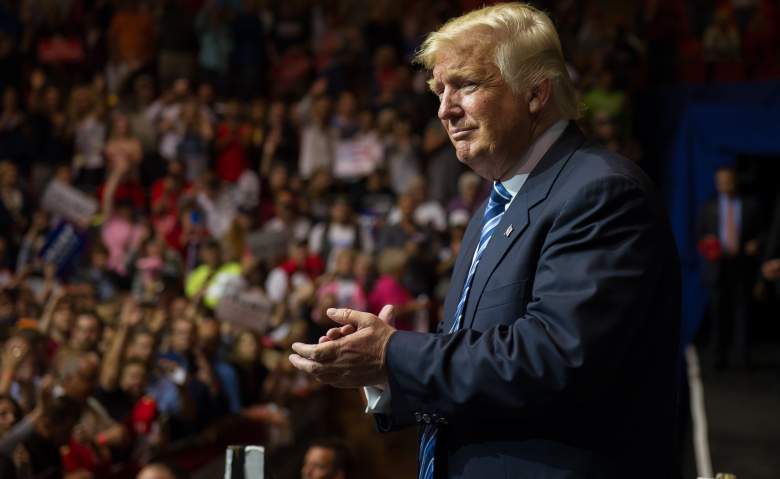
Donald Trump in Canton, Ohio on September 14. (Getty)
The final 2016 Electoral College tally is in. Now that Michigan has officially been declared for Donald Trump, the Republican candidate has won 306 electors compared to Hillary Clinton’s 232. In response to Michigan finally being called, Trump’s campaign manager, Kellyanne Conway, bragged that the Electoral College victory was a “landslide,” a “blowout” and “historic.” But how historic is it, exactly?
While it is certainly true that Donald Trump winning the presidential election was a historic achievement, his margin of victory over Hillary Clinton is hardly so large as to be classified as unprecedented or a landslide. In fact, when looking at all of the 25 elections that have taken place in the past 100 years, in 21 of them, the winner won by a wider margin than Donald Trump did in 2016.
The most recent election where the Electoral College result would be considered historic was 2000, as this was the most narrow margin in modern American history. George W. Bush defeated Al Gore by just five electors; the previous comparable election was 1876, when Rutherford B. Hayes won by one elector. Another historic election in modern times was 1984, when Ronald Reagan scored the biggest landslide in the history of the United States, winning 525 Electoral College votes.
In terms of the 21st century, Trump did not come close to scoring a bigger Electoral College victory than Barack Obama did; in 2008, Obama won 365 electors, and in 2012, he won 332. Trump did, however, win more electors than George W. Bush did in either of his elections. Just looking at the Republican candidates, every other Republican president since 1916 – Harding, Coolidge, Hoover, Eisenhower, Nixon, Reagan and George H.W. Bush, won with more electors than Trump did.
In addition to Kellyanne Conway’s tweet, Donald Trump himself also recently tweeted that he won the Electoral College in “a landslide.” Trump and his staff have continued to emphasize what they call a historic Electoral College victory as Democrats emphasize that Hillary Clinton won the popular vote. Now, Trump is attempting to discredit even that, saying that he would have won the popular vote if it wasn’t for voter fraud, a statement Trump has no evidence to support.
In order to put the 2016 election in historical perspective, here is the Electoral College total from every election in the past 100 years:
| Election | Winner | Loser | Margin |
| 1916 (Wilson) | 277 | 254 | 23 |
| 1920 (Harding) | 404 | 127 | 277 |
| 1924 (Coolidge) | 382 | 136 | 246 |
| 1928 (Hoover) | 444 | 87 | 357 |
| 1932 (Roosevelt) | 472 | 59 | 413 |
| 1936 (Roosevelt) | 523 | 8 | 515 |
| 1940 (Roosevelt) | 449 | 82 | 367 |
| 1944 (Roosevelt) | 432 | 99 | 333 |
| 1948 (Truman) | 303 | 189 | 114 |
| 1952 (Eisenhower) | 442 | 89 | 353 |
| 1956 (Eisenhower) | 457 | 73 | 384 |
| 1960 (Kennedy) | 303 | 219 | 84 |
| 1964 (Johnson) | 486 | 52 | 434 |
| 1968 (Nixon) | 301 | 191 | 110 |
| 1972 (Nixon) | 520 | 17 | 503 |
| 1976 (Carter) | 297 | 240 | 57 |
| 1980 (Reagan) | 489 | 49 | 440 |
| 1984 (Reagan) | 525 | 13 | 512 |
| 1988 (Bush) | 426 | 111 | 315 |
| 1992 (Clinton) | 370 | 168 | 202 |
| 1996 (Clinton) | 379 | 159 | 220 |
| 2000 (Bush) | 271 | 266 | 5 |
| 2004 (Bush) | 286 | 251 | 35 |
| 2008 (Obama) | 365 | 173 | 192 |
| 2012 (Obama) | 332 | 206 | 126 |
| 2016 (Trump) | 306 | 232 | 74 |